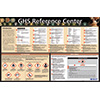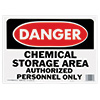Globally Harmonized System Compliance
OSHA has updated its Hazardous Communication Standard with the adoption of the Globally Harmonized System (GHS) of chemical labeling. HD Supply Facilities Maintenance can help you comply with these new hazard communication standards. Download Safety Data Sheets
What Is Globally Harmonized System (GHS)?
Previous to GHS, each country had their own standards and identification methods for hazardous materials and hazardous communication. Now, the same standards will be used internationally to identify chemicals that are flammable, toxic, corrosive, etc. The GHS assures that any material considered toxic in USA, is also considered toxic in Europe, Asia, South America, etc. The GHS standardizes the way hazardous materials are classified and labeled.
MSDS/SDS
The GHS replaces Material Safety Data Sheets (MSDS) with Safety Data Sheets (SDS). By now, you and your staff should be trained on new Safety Data Sheet format and the new chemical labeling requirements. Compliance date for training was December 1, 2013.
However, the transition is not complete; there are three additional compliance dates to be aware of.
Compliance Dates
| Effective Completion Date | Requirement(s) | Who |
|---|---|---|
| Effective Completion DateDecember 1, 2013 | Requirement(s)Train employees on the new label elements and Safety Data Sheet (SDS) format. | Who Employers |
| Effective Completion Date June 1, 2015**/ December 1, 2015 |
Requirement(s)Compliance with all modified provisions of this final rule, except: the distributor shall not ship containers labeled by the chemical manufacturer or importer unless it is a GHS label. | Who Chemical manufacturers, importers, distributors, and employers |
| Effective Completion Date June 1, 2016 | Requirement(s)Update alternative workplace labeling and hazard communication program as necessary, and provide additional employee training for newly identified physical or health hazards. | Who Employers |
| Effective Completion Date Transition period to the effective completion dates noted above | Requirement(s)May comply with either 29 CFR 1910.1200 (the final standard), or the current standard, or both. | Who Chemical manufacturers, importers, distributors, and employers |
Major Changes
OSHA advises on three major areas of change:
- Hazard classification: Now there are specific criteria for classification of health and physical hazards, as well as classification of mixtures. These criteria help to ensure that evaluations of hazardous effects are consistent across manufacturers, and that labels and safety data sheets are more accurate.
- Labels: Labels must include a harmonized signal word, pictogram, and hazard statement, as well as precautionary statements.
- Safety Data Sheets: New SDS have a specified 16-section format.
Pictograms
As of June 1, 2015 pictograms will be required on labels, identifying chemical hazards. Each pictogram represents a distinct hazard in the form of a symbol on a white background within a red frame.
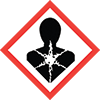
Carcinogen, Mutagenicity, Reproductive Toxicity, Respiratory Sensitizer, Target Organ Toxicity, Aspiration Toxicity
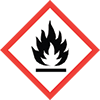
Flammables, Pyrophorics, Self-Heating, Emits Flammable Gas, Self-Reactives, Organic Peroxides
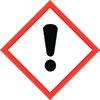
Irritant (skin and eye), Skin Sensitizer, Acute Toxicity, Narcotic Effects, Respiratory Tract Irritant, Hazardous to Ozone Layer (Non-Mandatory)
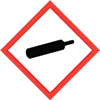
Gases Under Pressure
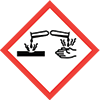
Skin Corrosion/Burns, Eye Damage, Corrosive to Metals

Explosives, Self-Reactives, Organic Peroxides
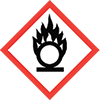
Oxidizers

Aquatic Toxicity (Non-Mandatory)
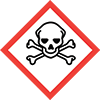
Acute Toxicity (fatal or toxic)
For detailed information about OSHA's Hazardous Communication Standard and the changes resulting from the Globally Harmonized System consult OSHA directly.
Let us help you comply with new SDS Standards
We've made it easy for you to locate, download, and print the Safety Data Sheets. Download Safety Data Sheets Now
Shop for the Products to Help You Comply
NOTE: This information is a summary interpretation and was prepared as general reference material only. This summary is not authoritative as laws can be amended over time. For specific compliance requirements and updates, please refer to the actual code language and the statute or legal counsel.

